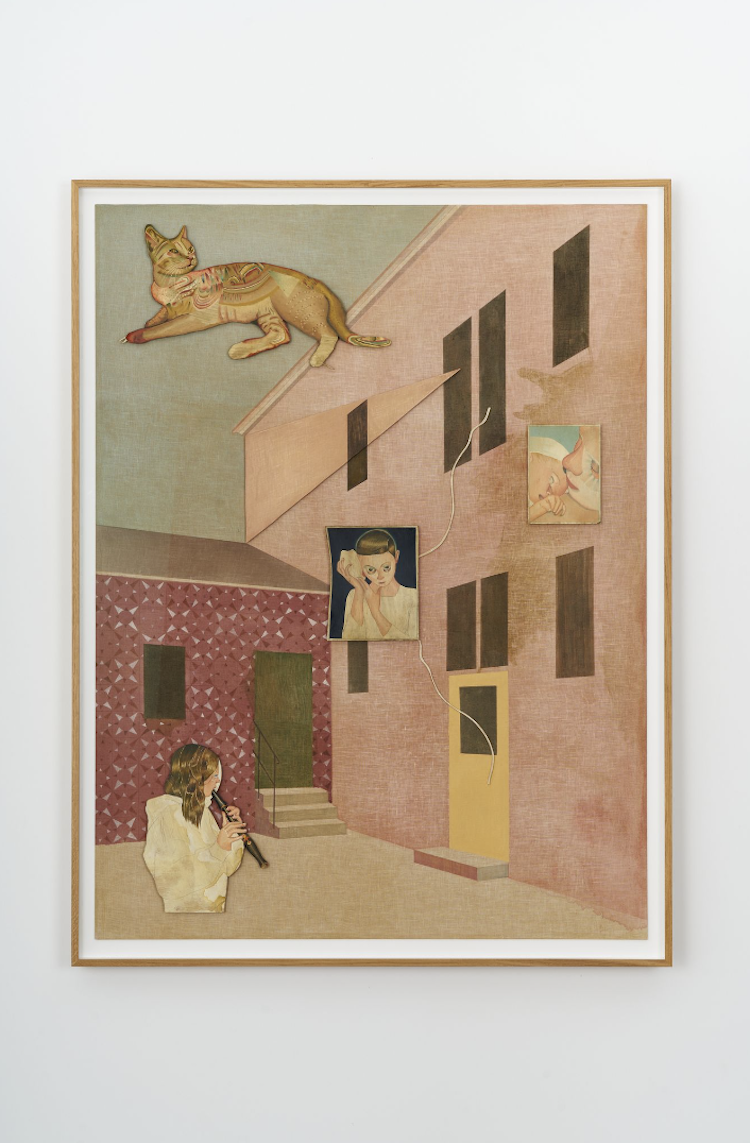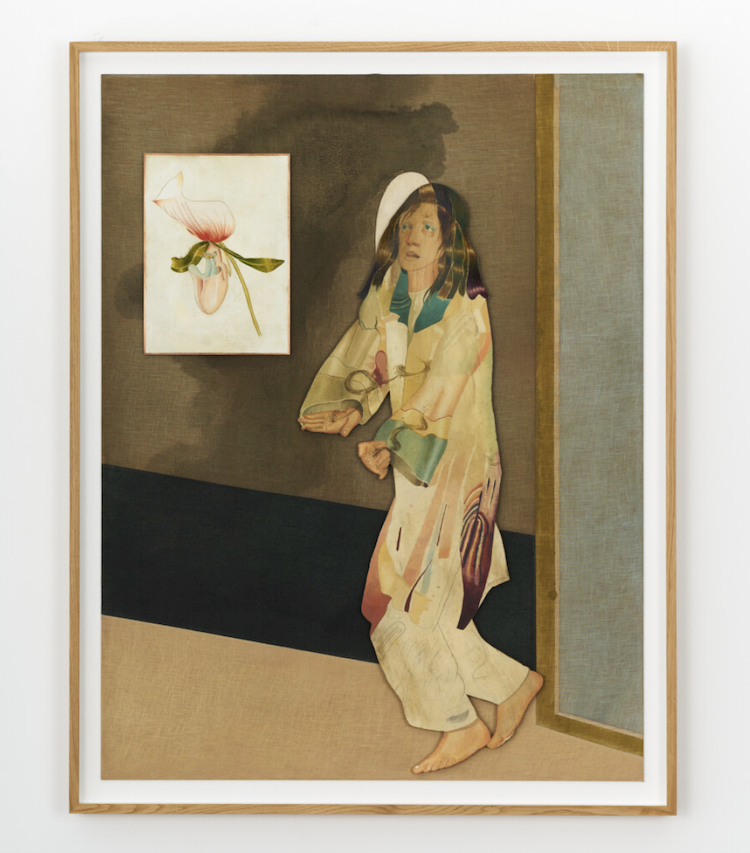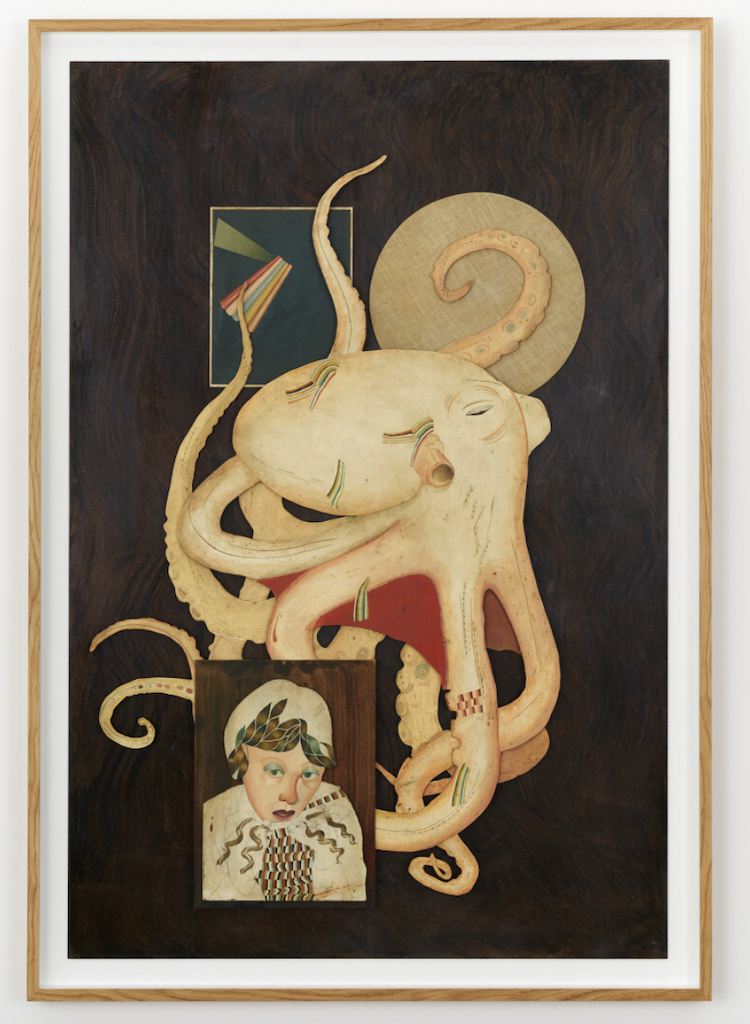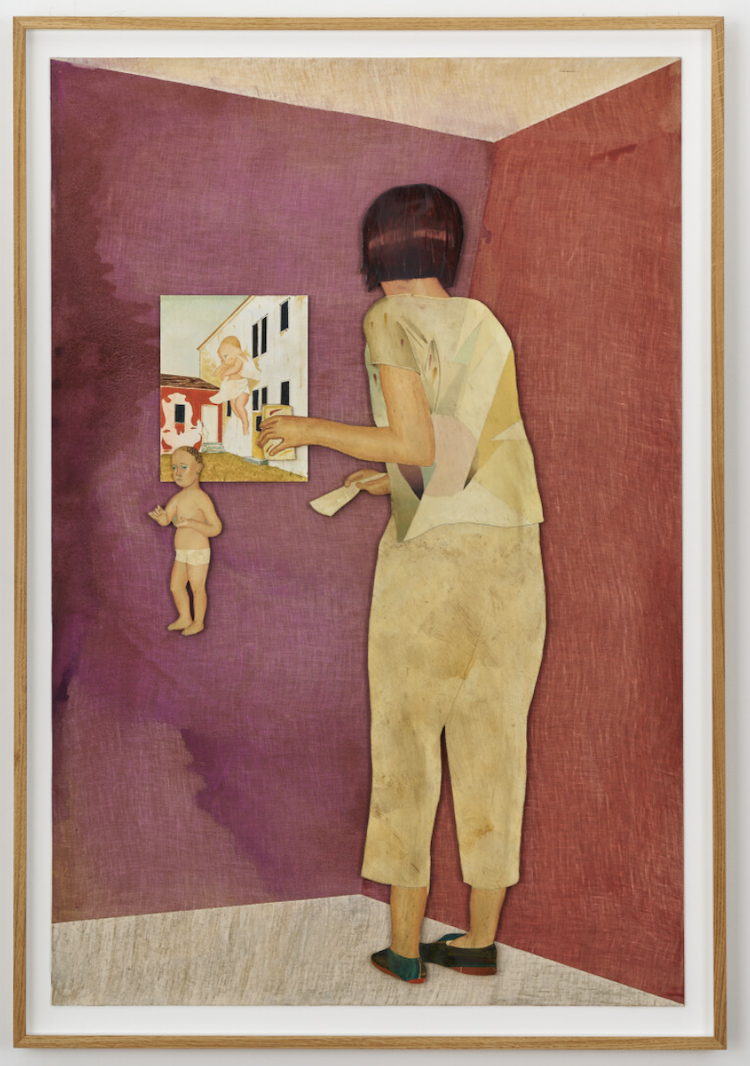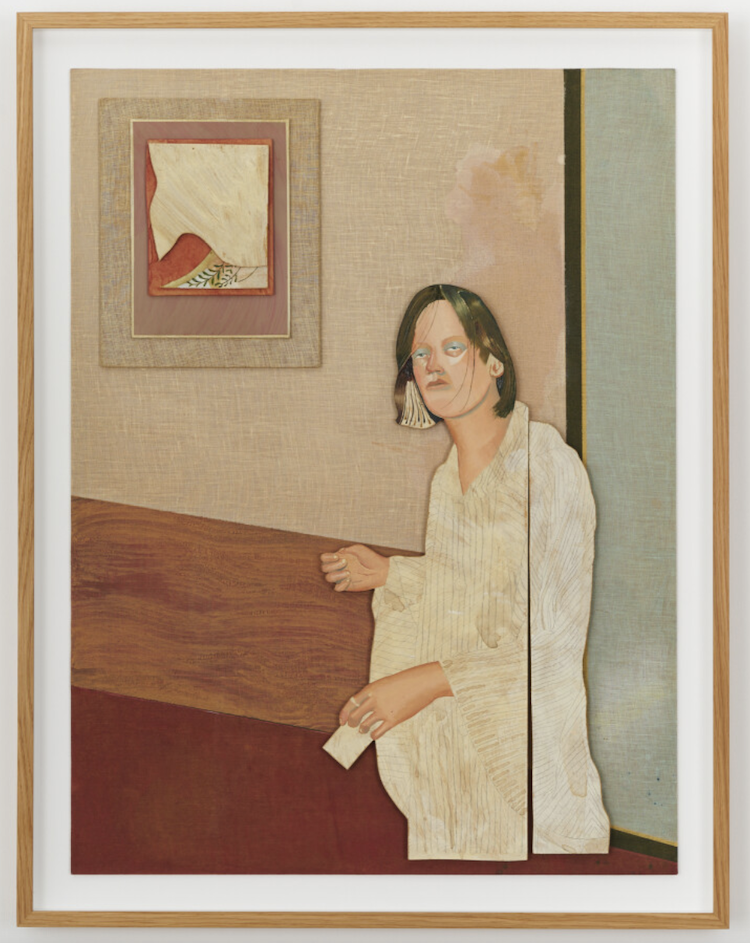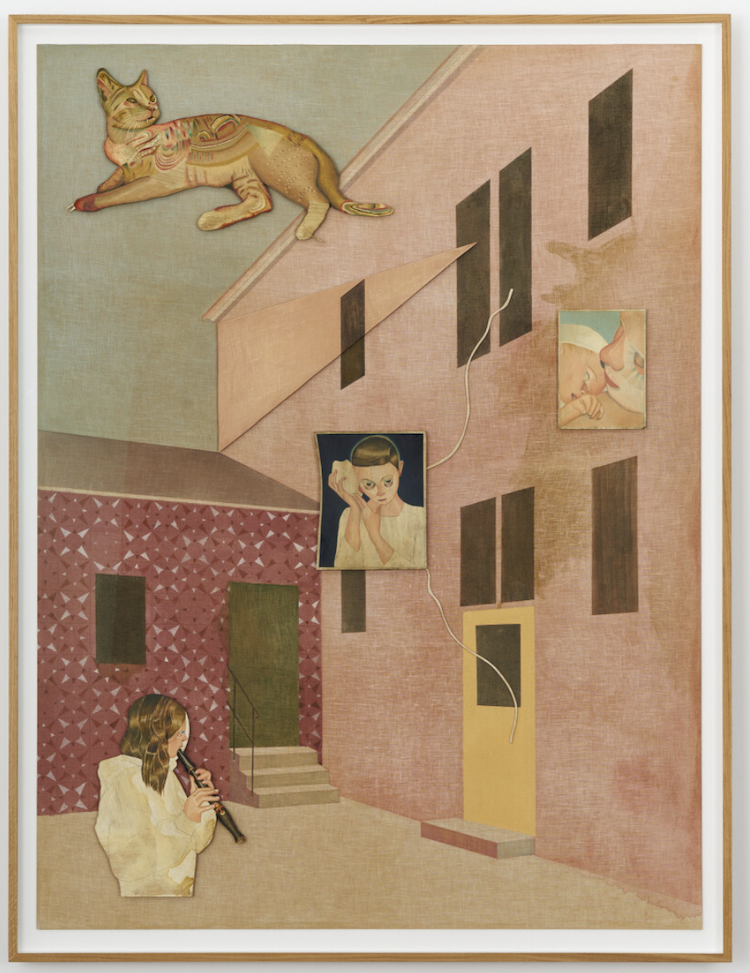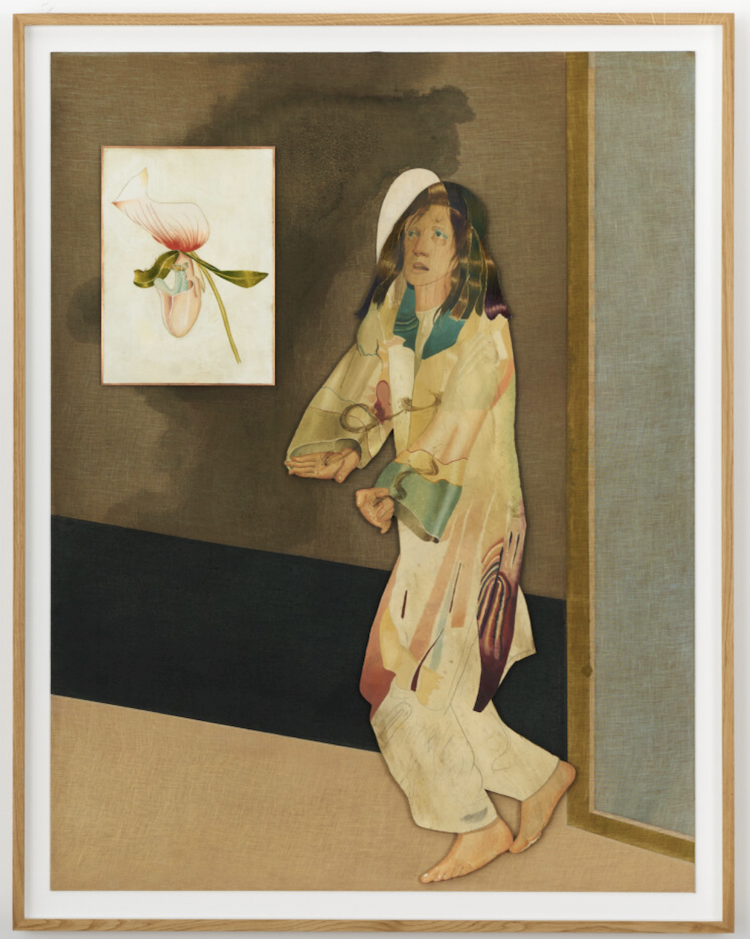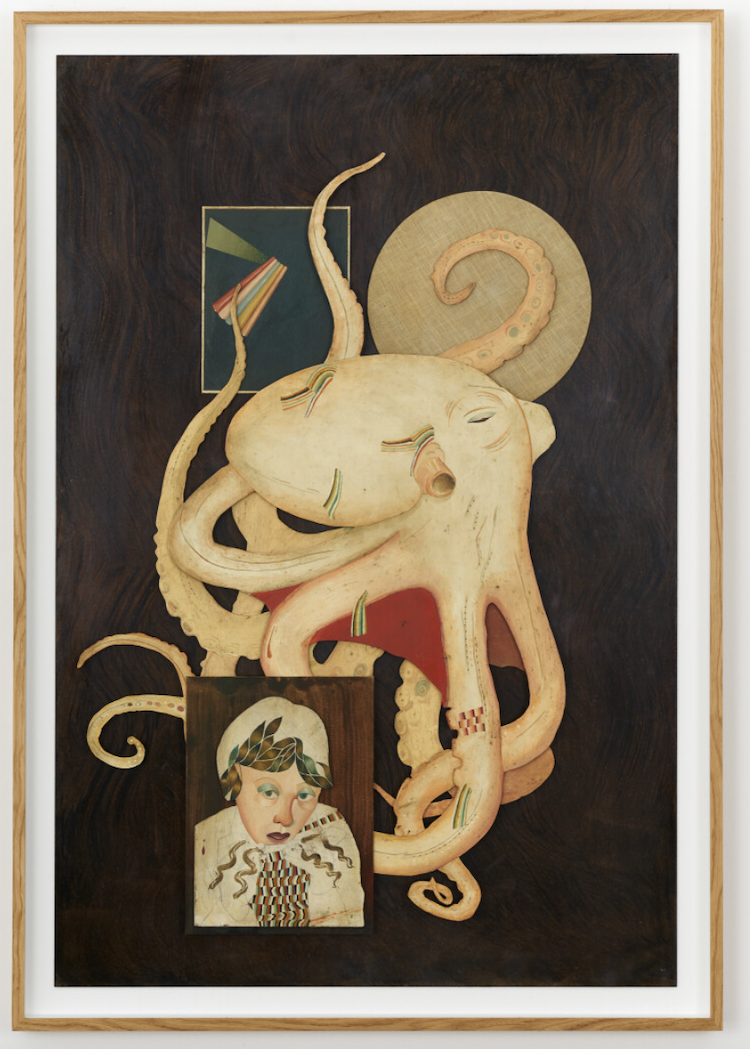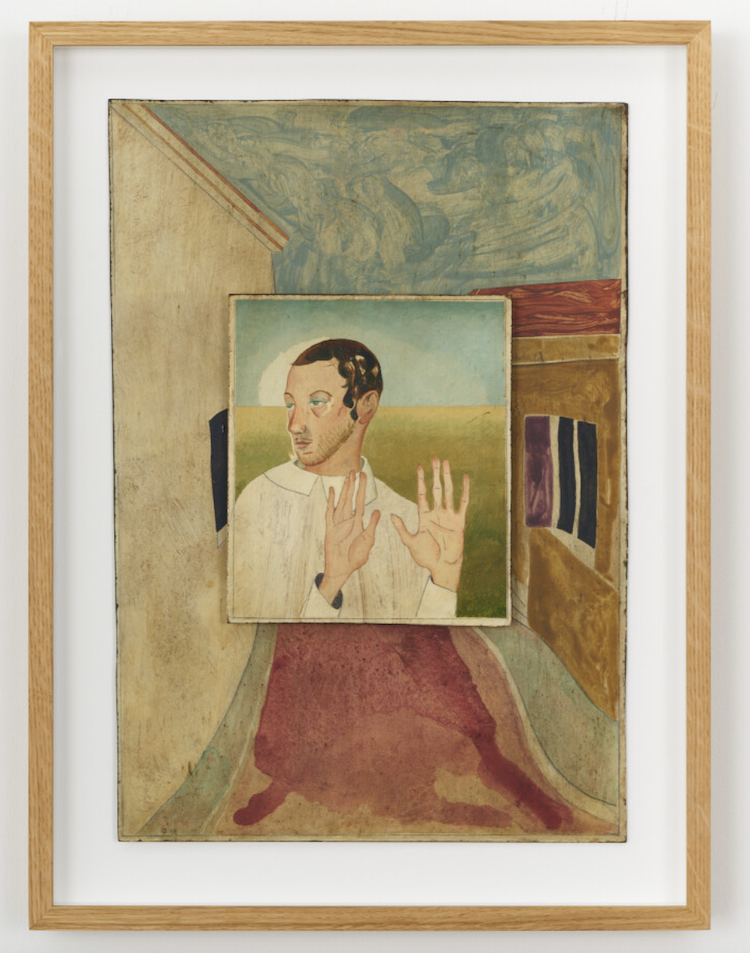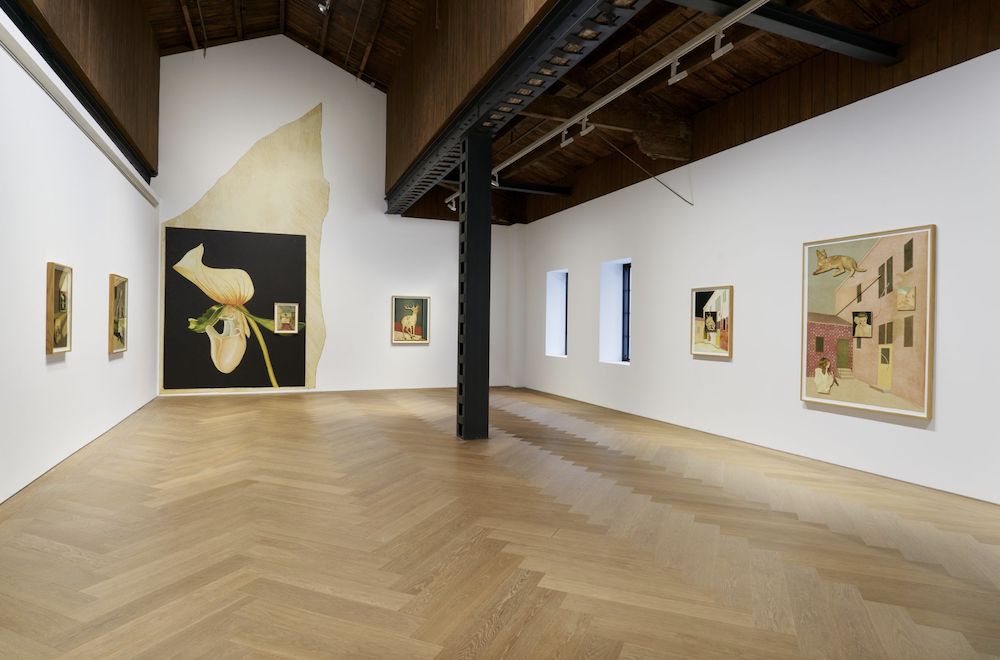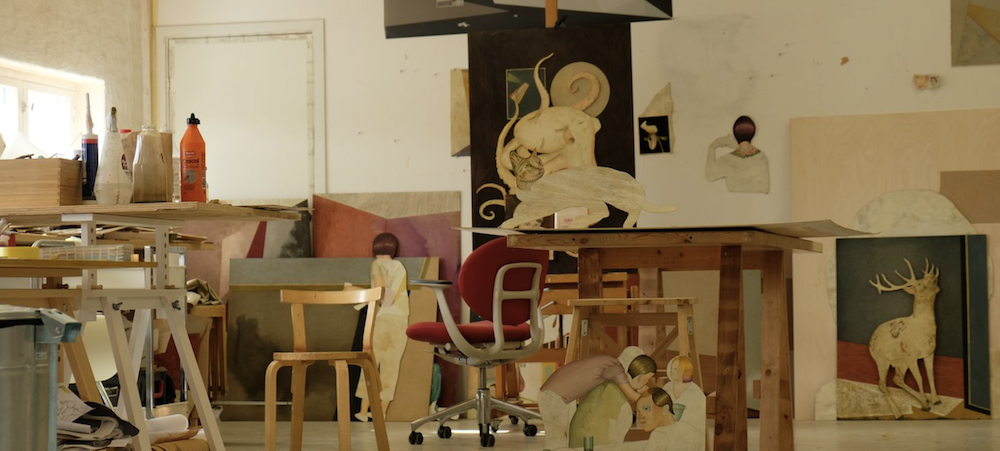Perrotin Shanghai is pleased to announce the solo exhibition Night School by Swedish artist Jens Fänge, showcasing his captivating new series of paintings from 2023. Jens Fänge’s Night School is not an ordinary school, but an oneiric space of sea snails, octopuses, slipper orchids, deer, cats, flutes, and more. Here underground activities literally happen at night, in an endless realm symbolizing our relation to knowledge and the inner world. The painting Luftschloss, for instance, takes a marginal scene from a Göteborg suburb and turns it into a place of perpetually evolving fantasies. In other paintings, the buildings are turned into an ocean of red or transported back centuries, and it seems that their black-windowed rooms can be further unfolded and viewed into.
In Fänge’s works, representations of architecture and real space are often intertwined and intentionally confused. Using rigid wooden panels to create his collages, the artist is able to move cut-out characters and objects – made of vinyl or cardboard – between different paintings, sometimes attaching pieces of canvas or wooden panels to the background (in Europe north of the Alps, paintings on wooden panels can be traced back to the Middle Ages, when many artists used them as the base material for their work, especially in the Netherlands, Flanders, Germany, and Scandinavia). Fänge’s paintings should therefore not be seen as independent or finished but as interconnected.
Animals and plants in the paintings occupy an equally important position as human figures, who only seem to gain new knowledge through their encounters with the former. The octopus symbolizes extreme flexibility and repeatedly appears in various scenes. The oval-shaped body of the octopus is geometrically similar to the slipper orchid’s lower lip. Portrayed in a wide range of cultures and literatures, the various body parts of octopuses and orchids have inspired a rich history of interpretation. At times associated with decay, mystery, and eroticism, they are also sought after by specimen collectors. The question arises why Fänge, contrary to biological facts, depicts the octopus as a nocturnal creature (in Nocturne) and the slipper orchid as a night-blooming plant (in The Flower that Blooms at Night).
Perhaps it is only in the pitch-black night that the world reveals its exciting side: it has not been fully understood yet, and thus there is still knowledge to be gained, awaiting scientists to explore. We enter a room and there are more rooms beyond it, located in another frame; this outward expansion of the desire to explore is actually isomorphic to the nature of inward soul-searching.
However, having explored the opposition between day and night, Fänge’s school, unlike the Enlightenment ideal of "illustrious" academies, remains in the depths of darkness. We can approach these objects, but ultimately, they remain unknown, inexhaustible things-in-themselves. After viewing the entire exhibition, the viewer must consider the possibility that there is no reason for the existence of those octopuses, dolphins, shadows, putti, and rooms in the paintings, that this absurdity may be a product of our obsession with naming things and calling it knowledge; or, even more elusively, that there may be some hidden order between self and universe, the microcosm and the macrocosm, but that this order is not interested in our existence and can only be grasped negatively: the essence of the world is hidden, behind the vinyl cut-outs, behind the canvas. —Clement Huang

